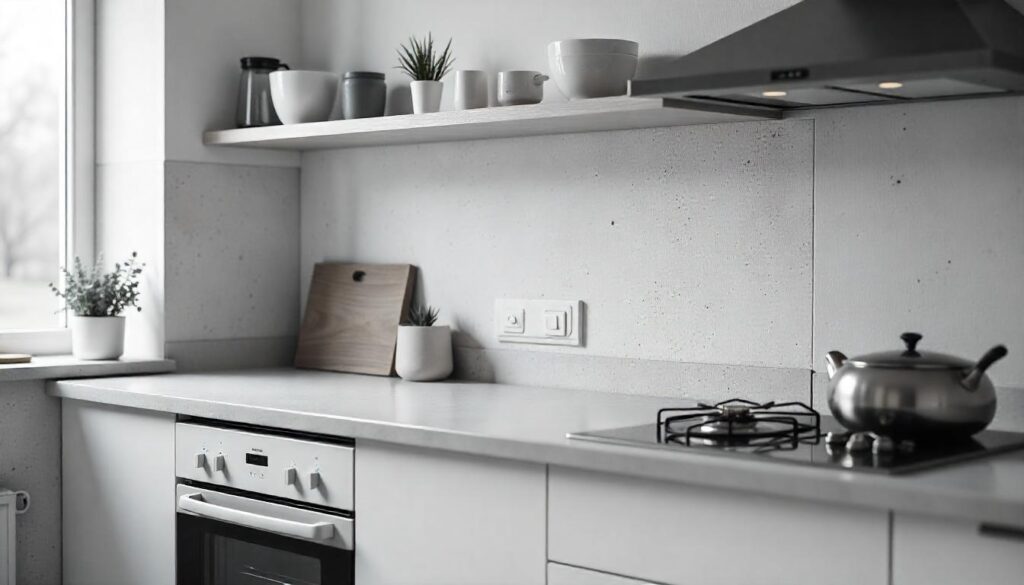🍞 Introduction: That Time I Found Mold Behind My Toaster…
I’ll never forget the morning I went to make toast and noticed something odd behind my toaster: a dark, fuzzy patch crawling up the wall. At first, I thought it was just a shadow—or maybe a stain from a spill. But nope, it was mold. In my kitchen. The place where I prep meals every day. Gross.
If you’ve ever spotted mold in your kitchen—or worse, smelled it before you saw it—you know how unsettling it is. It creeps in quietly and lingers like an unwanted guest. But don’t panic. You’re about to learn how to spot, clean, and prevent it, once and for all.
🧪 Why Kitchen Mold Happens: A Quick Dive into the Science
Kitchens are a hotspot for mold growth because they combine the three things mold loves most: moisture, warmth, and organic material (like crumbs, grease, or even old wood cabinets).
Mold spores are literally everywhere—floating in the air, landing on surfaces. But they only start growing when the environment is just right. Think about the condensation behind your fridge, that slow-draining sink, or steam trapped under the microwave. These are mold’s favorite hangouts.
It’s not just about appearances either. Mold can cause allergic reactions, breathing issues, and even contaminate your food prep areas if left unchecked.
🔍 Signs of Kitchen Mold (You Might Be Missing These!)
Real-Life Situations Where Mold Shows Up
- Under the sink: Leaky pipes or unnoticed spills keep this area constantly damp.
- Behind appliances: Ever pulled your fridge away from the wall? It’s like a mold party back there.
- Ceiling or corners: Steam from cooking rises and gets trapped, especially if ventilation is poor.
- Inside cabinets: Spilled sauces or wet dishes can quietly feed mold behind closed doors.
What to Look (and Smell) For:
- Dark or green patches
- Musty, earthy odor (think wet socks)
- Peeling paint or bubbling wallpaper
- Allergy flare-ups while cooking or cleaning
🧽 How to Remove Mold from the Kitchen (Step-by-Step Guide)
Removing mold isn’t just about wiping it away—it requires a targeted approach to kill spores and stop them from coming back.
Step-by-Step Instructions:
- Gear Up
- Wear gloves, a mask, and eye protection.
- Open windows or turn on a fan for ventilation.
- Identify and Isolate
- Locate all moldy areas.
- Move appliances or furniture as needed.
- Keep pets and kids away from the space.
- Mix a Cleaning Solution
- For light mold: Mix equal parts white vinegar and water.
- For stubborn mold: Use 1 cup bleach in 1 gallon of water.
- Optional: Add a few drops of tea tree oil for antifungal power.
- Scrub & Wipe
- Spray the solution onto the moldy area.
- Let it sit for 10–15 minutes.
- Scrub with a stiff-bristle brush or sponge.
- Wipe dry with a clean cloth.
- Dry Completely
- Use a towel, fan, or dehumidifier.
- Mold will return if moisture remains.
- Discard Contaminated Items
- Toss out old sponges, rags, or heavily infested food containers.
🧠 Expert Tip Box: Don’t Just Clean—Fix the Source
🗣️ “Cleaning mold is only half the job. If you don’t address the moisture source, it’s coming back. Period.”
— Jen M., Professional Home Cleaner & Mold Inspector
Check under-sink plumbing, seal windows, and improve airflow with a kitchen fan or dehumidifier.
🚫 Preventing Mold in the Kitchen: Simple Habits That Work
Kitchen mold prevention doesn’t need to be fancy. It just requires consistency.
Try These Mold-Fighting Habits:
- Wipe down counters and behind appliances weekly
- Fix drips or leaks immediately
- Run your stove hood vent when cooking
- Dry your sink and faucet base after use
- Don’t leave wet dish towels or sponges lying around
- Use airtight containers for food
- Inspect corners, ceilings, and cabinet backs monthly
Bonus Tip:
Leave cabinet doors slightly open occasionally to air them out, especially under the sink.

🧼 Final Thoughts: Say Goodbye to Kitchen Mold
Mold in the kitchen doesn’t mean your home is dirty—it means moisture found an opportunity. But now you know how to recognize the signs, remove it properly, and (most importantly) prevent it from coming back.
Whether it’s scrubbing under your sink or double-checking your vent fan, small steps go a long way. Keep your kitchen fresh, safe, and ready for whatever culinary adventure comes next.
👉 Got your own kitchen mold horror story—or a tip that worked for you? Share it in the comments below! You might help someone else fight the fuzz too.